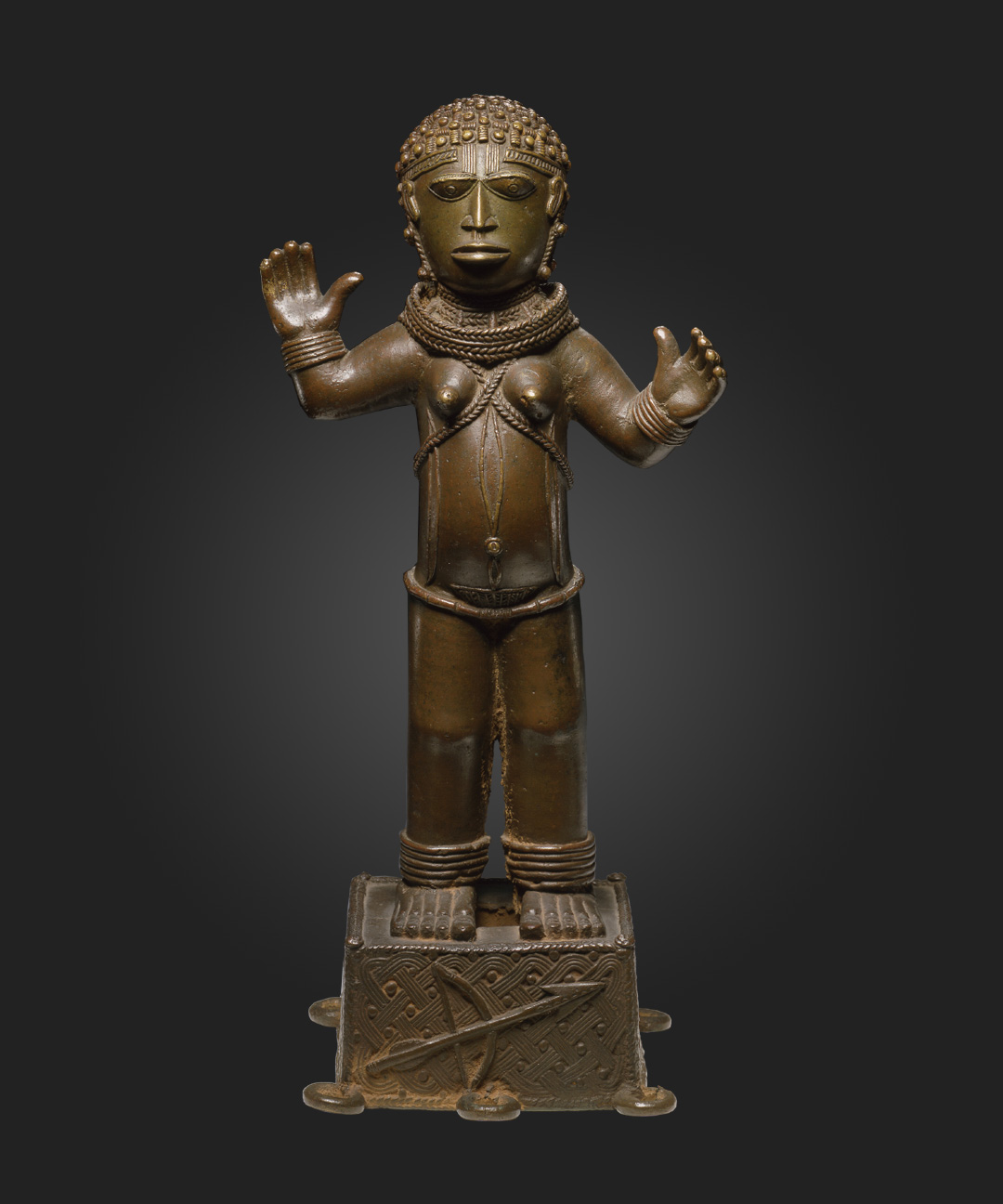Time for the second day of our experiment. Before reading this post, if you haven't already, please go back to yesterday's feature! Today's sculpture is combined with the one featured yesterday. :)
How differently can objects be treated? Yesterday’s putto by Donatello and the statuette of a goddess or princess from Benin show the unequal handling of two masterpieces.
The figure of a naked woman who stands on a rectangular base decorated with a bow and arrow is probably Irhevbu, the beloved wife of Ake, the god of archery. Some also say the figure portrays Princess Edeleyo, who was killed by a poisoned arrow. This work is unique among the sculptures from the Benin Kingdom, today part of Nigeria. Just as the putto, it was made during a period of innovation starting in the early 16th century when artists in the Benin Kingdom mastered the art of casting sculptures in molten metal.
The master who created this figure shows her in motion, her left arm coming down and reaching out to the viewer. In contrast to the putto by Donatello the artist has chosen to emphasize how she is grounded: she faces front, her strong feet and slightly flexed legs support her smooth, powerful torso and arms. Instead of suggesting rotation, the master has chosen to emphasize her physical beauty and her rich adornment. The smoothness and deep shine of her skin contrast with the fine details of her hair and the jewelry that adorns her.
The work was made of copper alloy. The significance of the putto and the figure of Irhevbu or Edeleyo are reflected in their material, bronze or copper alloy. Metal casting—which poses considerable technical challenges—is by definition expensive and emphasized both the standing of the patron and the importance of the work.
Despite their unquestionable importance in their original contexts, the two objects were understood quite differently when they were integrated in the Berlin museum’s collections. In contrast to the putto, who was seen as a masterpiece, works from Benin were seen as primitive. The difference between the two objects was emphasized by the institutions in which each was held and displayed. The Benin sculpture was considered an ethnological specimen and relegated to a crowded display case. The Beyond Compare. Art from Africa in the Bode Museum exhibition at the Bode-Museum broaches this issue among others.


 Unknown Artist
Unknown Artist